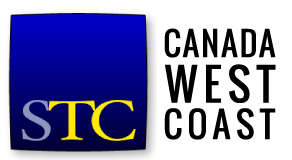On November 6, 2019, Kit Brown-Hoekstra presented a webinar on productivity for technical writers. She provided dozens of useful tips from her own experiences as a busy and productive person. Kit is an author, trainer, consultant, STC Fellow, a Past President of the STC, and a CPTC trainer.
Being busy is not the same as being productive
Everyone is different but we all struggle with staying productive and effective and managing our time to balance our work and personal lives.
Kit’s theory is that people have embraced the “cult of busy,” taking on too much and trying to fit it all into our schedules. She thinks this comes from a Puritan work ethic, which many successful people struggle with.
Procrastination and poor time management are common challenges. She described the “monkey mind,” the state of not being able to turn off our brains, and the concept of busyness vs. productivity.
Busyness includes a lot of activity and showing that you have a lot to do, while constantly thinking about your to-do list. Productivity is focusing on the right activity at the right time, being effective with the time available, and completing the tasks on your list one at a time.
People who work the most hours are not necessarily the most productive. The saying “work smarter, not harder” still holds true today.
The hacks
Kit went through five great “hacks” to help you be more productive and get things done. Some of these might seem obvious, but many of the techniques were new to me, and might be to you as well.
- Systems and habits: Identify your values and priorities. Automate the process (schedules, reminders, timers), and work with a buddy to bounce ideas and keep each other on track.
- Plan and prioritize: Set OKRs (objectives and key results); use productivity planners to maximize your time.
- Time box: Set blocks of time for each activity, use a timer, break goals into chunks. Guard your time; don’t allow other tasks to intrude on the allotted time block.
- Get outside: Take a break and enjoy the outdoors — whatever energizes you.
- Work from your strengths: Identify the skills you’re good at and use them.
Bonus hack: Savour success!
Many of us don’t take the time to do this after a job well done. We move on to the next task, without congratulating ourselves and our team and feeling proud of the work we accomplished.
More tips
- Pick what works for you: Know your strengths! You might not want to use all these hacks but pick the ones that are most likely to work for you.
- Set SMART goals (specific, measurable, achievable, realistic, and time-based).
- Set goals, then break them down to the smallest tasks to move you forward.
- Take care of yourself: Are you getting enough sleep? Are you taking breaks, exercising, eating right, and living your best self? This will improve both your work and your personal life. Also, get outside, whether it is the park, the city, the mountains — whatever is your happy place, go to it often.
- Play with different tools and techniques: Don’t get stuck using something because it was recommended by your manager or worked for someone else. Take what is out there, try it, and see whether it resonates with you.
Overall, I loved the idea of taking all these concepts and ideas, working with them, and seeing what works best for you. Identify your priorities and strengths and use those as much as you can to accomplish those things you are putting off or straining to find time for.

